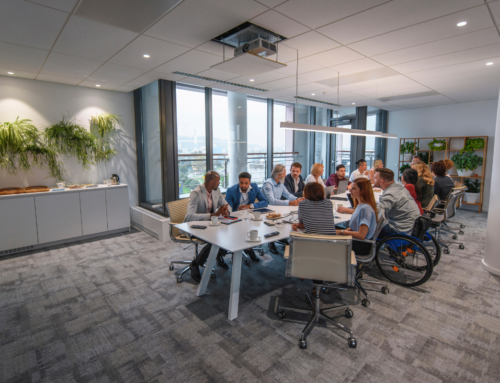One of the great pleasures about finishing a book is getting to leave your writing desk and find the audience, people who share your interest in and enthusiasm for the topic. Finishing Can You Hear Me? was no exception.
Perhaps one of the items I had most trepidation about was the use of emojis in a business setting. There was research that showed that many in the business world, especially from an older generation, still believed that emojis were puerile, for younger workers only. But I was convinced that, in order to begin to put the human intention back in the business world, we needed simple ways to signal what that intent was. Emoticons were a good way to do precisely that. So that the next time you sent a snarky email to your colleague, for example, you could add a smiley face, or a wink, to show that you were just kidding, and avoid World War Three with Accounting.
Imagine my delight, then, to run across Katie Duffié and The Design Gym. Katie does marketing for the organization. The Design Gym is an innovative design consultancy that promotes creative thinking through public workshops and client collaborations running anywhere from 2 days to 8 weeks. Founded 7 years ago, and based in Brooklyn, NY, The Design Gym mixes facilitation, custom tool kits and design sprints along with coaching to help organizations develop new ideas, processes and ways to market.
And they use emojis. Lots of emojis. They use emojis to check in with their team on Monday mornings ... (“tell us about your weekend using 3 emojis”). They use emojis to sense the mood of the organizations they’re working with at the beginning of engagements … (“how would you represent the current vibe and culture of the team using emojis?” ) And they use emojis as regular temperature checks for weekly sessions with clients… (“what weather emoji represents your current emotional mood?”). The idea is to make it easy and comfortable for people to let their teams and collaborators how they’re feeling, so that the emotions enhance their work together rather and get in the way.
Erin Lamberty, Manager of Culture and Training Strategy at The Design Gym, notes that the organization used sticky-note emojis before they used virtual ones. “It’s up to you how you design a work experience,” she says. “All your habits, bad or good, can carry over into the virtual space. The point is to be intentional.”
Erin continues, “You need to ask yourself, ‘What do I want to accomplish with this engagement?’ ‘How are we going to get people there?’ And, ‘How do I want people to feel before, during, and after the work?’ ” She points out that you have to design the experience; you can’t expect it to be delightful on its own. And this need for intentionality is true whether you’re face-to-face or virtual.
The company has begun to undertake more and more virtual work, especially for ongoing communication with their clients. Much of the facilitation and design itself is still done face-to-face. But as a result of the increased focus on virtual presence, The Design Gym has become very familiar with virtual tools such as Slack, digital white boards, Google docs, and the simple uploading of photos.
And emojis. “We use emojis to check in at the beginning of virtual sessions, and to check out at the end,” says Erin. “We’re always looking for new ways to quickly get a read on each other’s headspace and emotional state. Emojis give people an entry point into sharing something more personal than just status updates, but it’s also important to know when to pick up the phone and talk.”
The Design Gym is one organization that doesn’t fear emotion, or emojis, or the future of work. In fact, they’re designing it.









Thanks for sharing